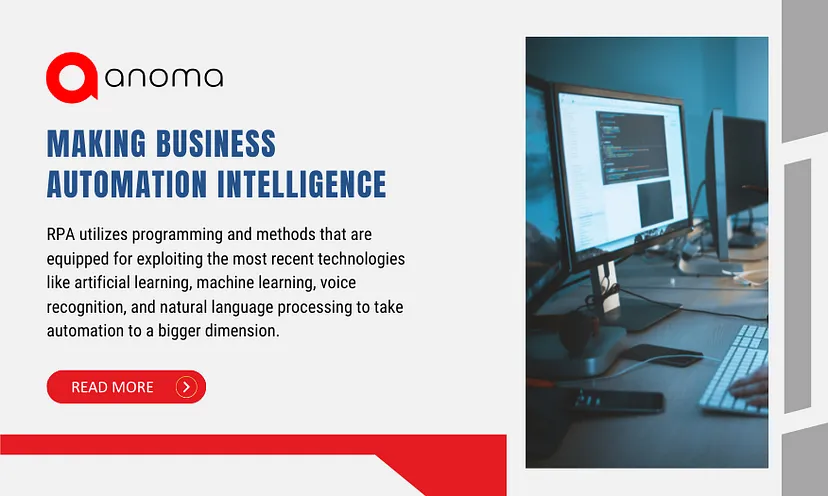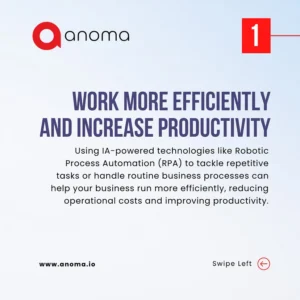- April 12, 2023
- Posted by: Author Anoma
- Categories:

“ You’re either the one that creates the automation or you’re getting automated. ” — Tom Preston-Werner
RPA utilizes programming and methods that are equipped for exploiting the most recent technologies like artificial learning, machine learning, voice recognition, and natural language processing to take automation to a bigger dimension.
That makes it an absolute necessity for organizations of all sectors that need to pass on their business up and down the Business Automation Intelligence – Anoma Tech
RPA has taken us far towards opening profitability benefits tied up in manual procedures in the course of recent years and has helped in developing an attitude that things can change without the requirement of reengineering gigantic frameworks.

At the point when a big change is anything but a reasonable alternative for companies, RPA can go about as a facilitator to enable organizations to grow and include value, empowering them to come up with strategic frameworks around investments they’ve effectively made into their heritage frameworks.
The integration into AI is the subsequent stage of this granular, quicker type of change, with more Business Automation Intelligence – Anoma Tech either entirely or halfway automated by progressively refined means. This is ordinarily called cognitive RPA or, CRPA. Artificial Intelligence engages RPA.
“ One machine can do the work of fifty ordinary men. No machine can do the work of one extraordinary man. ” — Elbert Hubbard
RPA stages integrated with AI technologies will, in general, automate the emotional and judgment-based process. To accomplish this, they have to incorporate cognitive abilities including natural language processing, machine learning, and speech recognition. At this point, these Business Automation Intelligence – Anoma Tech can include a human reaction to their work process.
They can gain from human activities and make certain that they will have the capacity to make the required move independently.
The objective is to learn, ingest, and arrange data with the goal that the RPA stage will be ready to downplay the intercession of a human. This blend of RPA and ML is called IPA (intelligent process automation) or CRPA (cognitive robotic process automation).

In cases this way, artificial intelligence value added comprises having the capacity to procure and accumulate complex information from heterogeneous sources like content, voice, and natural language and to capitalize on this information simply as traditional data.
“ Software is the language of automation.” — Jensen Huang
Business Automation Intelligence – Anoma Tech
As new digital innovations make their way to the market, business experts are faced with the challenges of seeing precisely where solutions can be profitable to drive effectiveness and building up a business case for execution.

Frequently, you will instinctively realize where there are wasteful aspects, yet this must be justified by a more proof-based, bottom-up perspective of what is going on over a business’ IT frameworks and gadgets with the end goal to put forth a solid case for investment, this is when process discovery becomes so vital.
Read more blogs at www.anoma.io
